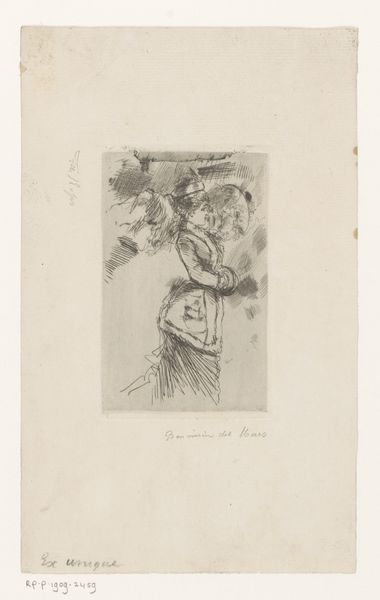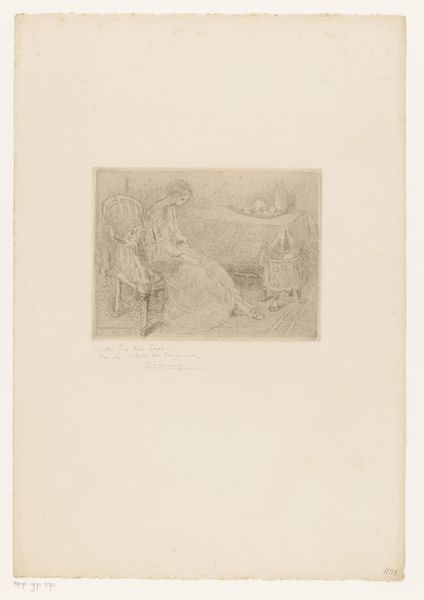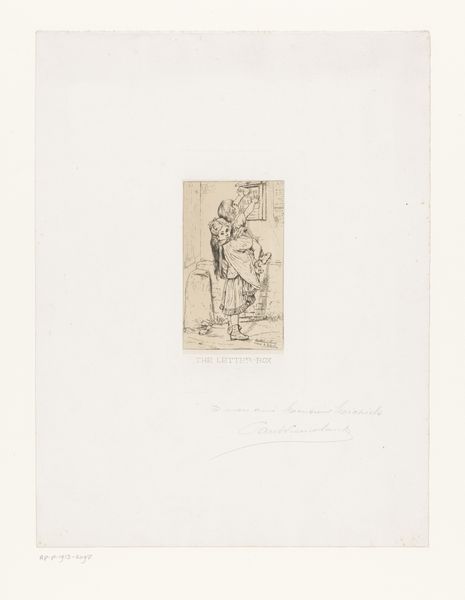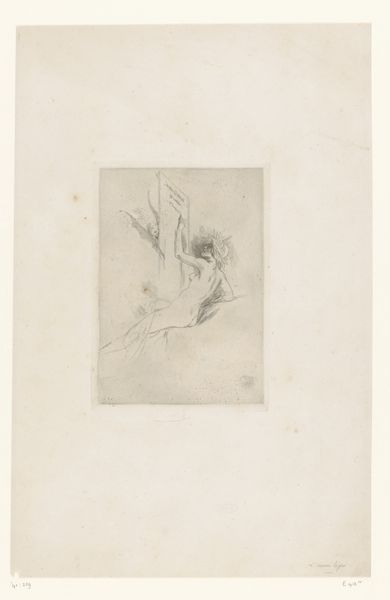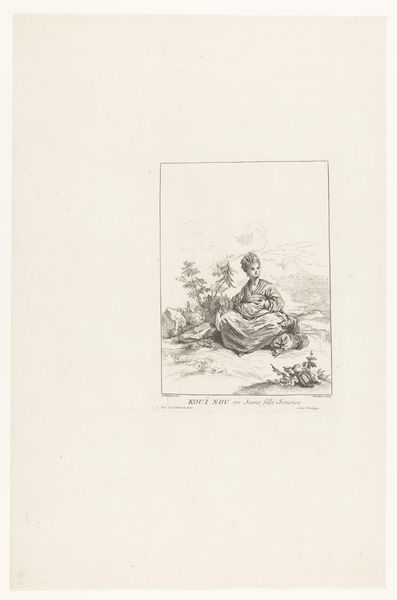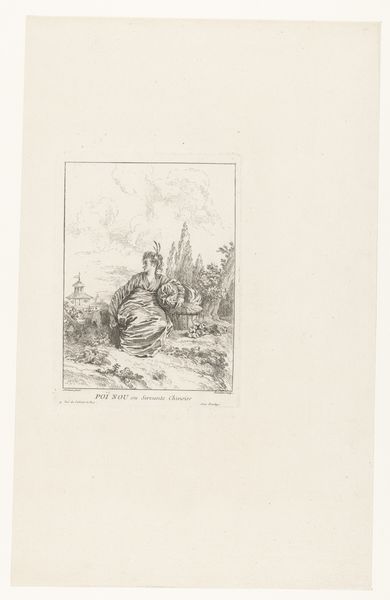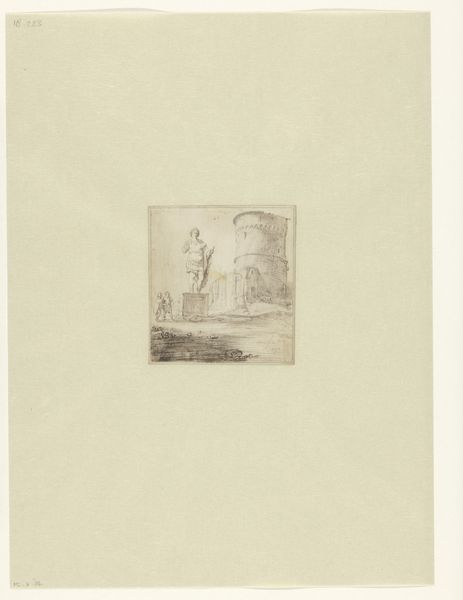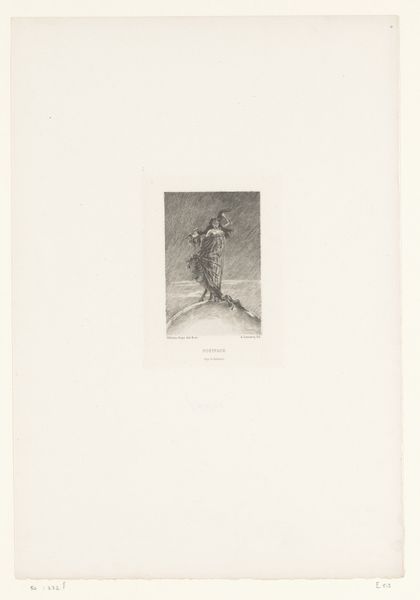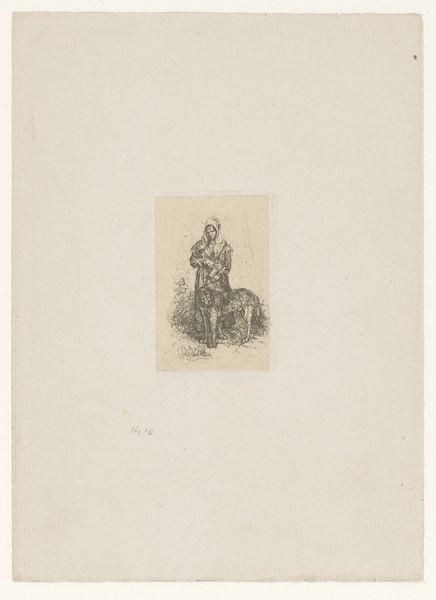
drawing, paper, ink, pen
#
drawing
#
landscape
#
figuration
#
paper
#
ink
#
romanticism
#
pen
#
history-painting
Dimensions: height 197 mm, width 159 mm
Copyright: Rijks Museum: Open Domain
Curator: Here we have Charles Onghena’s "H. Sebastiaan" created in 1834. It’s a pen and ink drawing on paper depicting Saint Sebastian. What’s your initial read of this work? Editor: There’s a certain fragility to it, a quiet desperation in the very delicate linework. It's as though the artist captured a fleeting moment of human vulnerability. It is in black and white—which gives a melancholic feel. Curator: It's interesting you mention the linework because Onghena was quite skilled, trained within academic circles emphasizing draftsmanship as foundational. This image participates in a longer history of artistic interpretations of Saint Sebastian. Editor: It raises the question of why an artist would choose pen and ink for such a monumental theme? Is it about accessibility of materials? The quickness of the medium, offering a rapid dissemination of this imagery? Curator: Exactly. Print culture was booming. The relatively easy reproducibility of ink drawings meant images circulated widely, shaping public perception and contributing to religious and historical narratives. These works had real social and political impact. Editor: And look how the lines define the saint's form, seemingly vulnerable, yet imbued with resilience. I'm curious, what was Onghena's involvement in the art world and its institutions at the time? Curator: Onghena was part of a generation navigating Romanticism and nascent Realism. His choice of subject matter aligns with the period's interest in history painting and religious iconography, although his technique leans toward a more intimate, personal expression rather than grand academic style. Editor: And the consumption of art has obviously shifted. Now we see it on screens; a far cry from the devotional function these images originally held, impacting our emotional experience today. Thank you for providing this insight. Curator: Yes, thinking about its role within religious instruction, influencing moral conduct and shaping societal norms makes you think twice. I think this really encapsulates the romantic and religious fervour of its time.
Comments
No comments
Be the first to comment and join the conversation on the ultimate creative platform.
